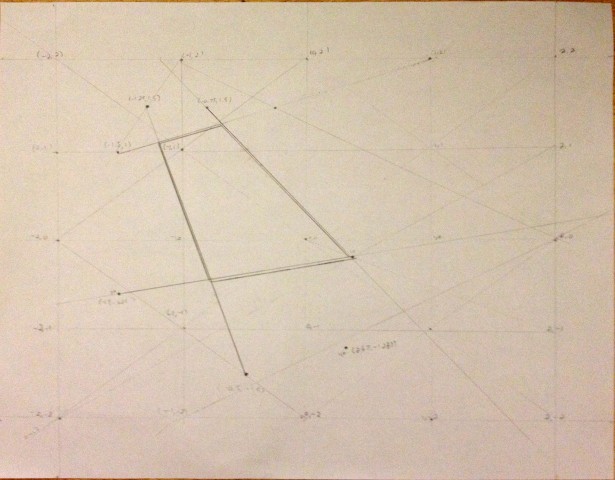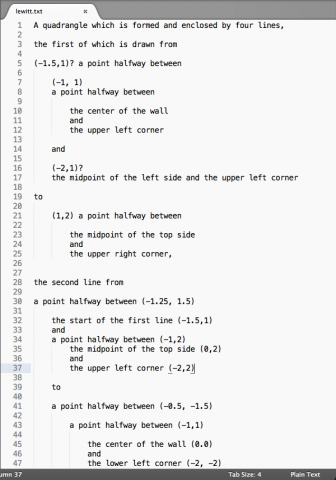Interpreting Lewitt’s Quadrangle
Drawing Lewitt’s quadrangle was a struggle. After reading and rereading the instructions, I ended up typing them out word for word in a text editor, then breaking them up using operator words (“a point halfway between”, “and”, etc.) and indentation/whitespace. That alone wasn’t enough; in the end, I needed a more succinct way to represent any point on the screen, so I created a grid ranging from (-2, -2) to (2, 2) and started referring to points that way. That helped immensely (hence the title of this post.)
Lewitt’s drawing instructions are code, I think, strange as it is. It is a code using English syntax rather than that the syntax of a programming language, but it is precisely describing a set of actions to execute in a very code-like way. That said, one long English sentence is not a nice coding language to work with. Turning it into pseudocode seemed to be the only way to deal with it. I guess that’s an interesting part; to execute code, as a human, I have to turn it into pseudocode (higher level), while a computer would have to translate something lower level.

